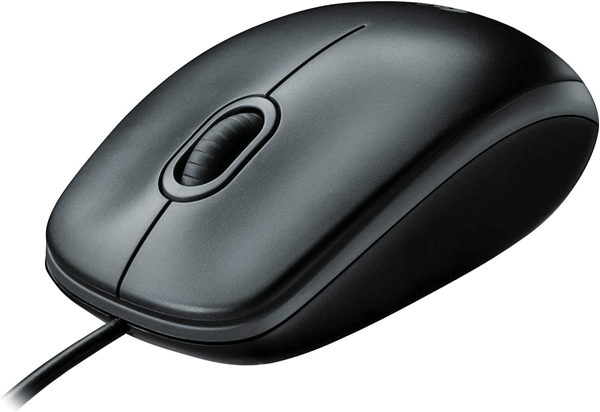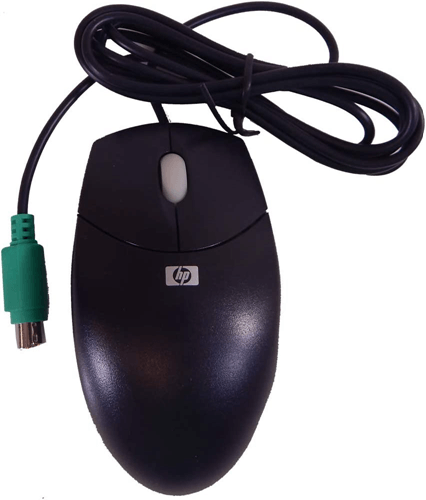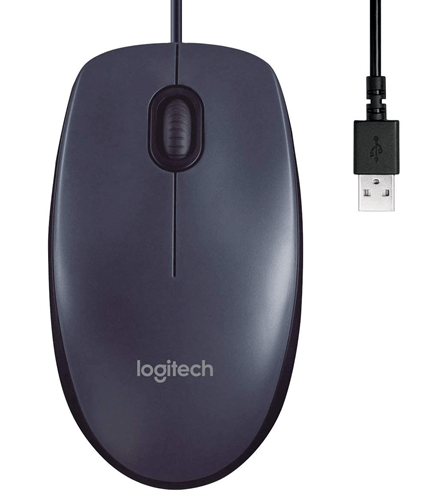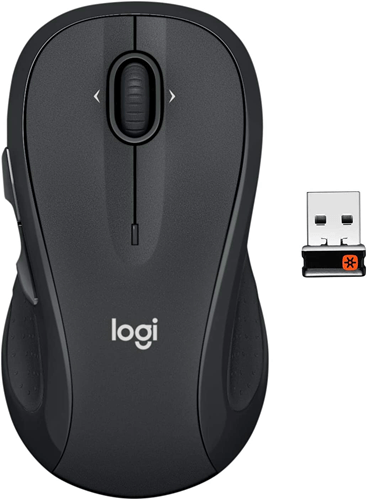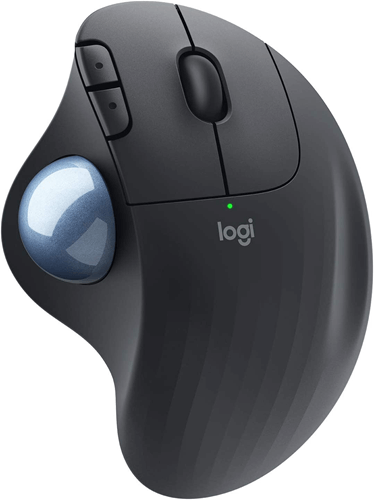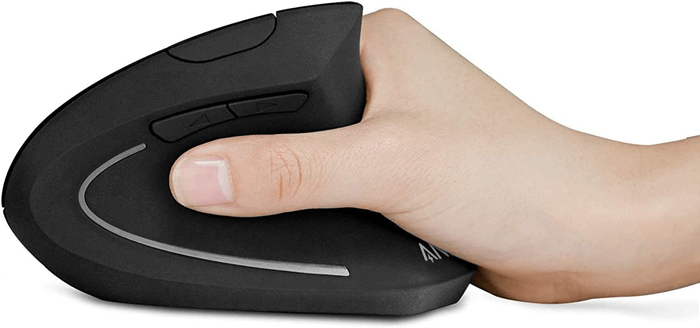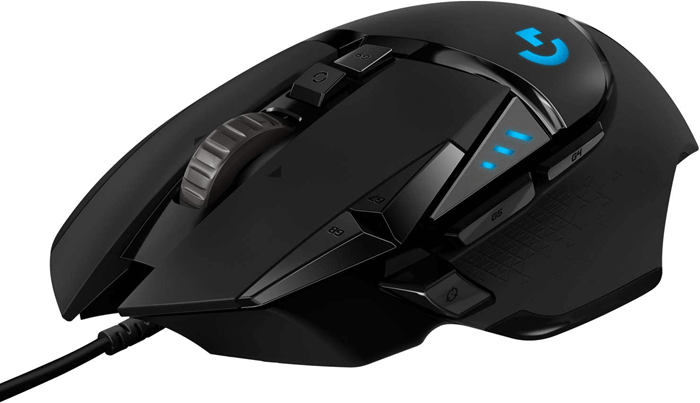Computer Mouse is an important input device for any computer. It is a simple point and click device that simplified the way we interact with a PC. Using a mouse, you can move a cursor around the screen and perform several operations. The GUI (Graphical User Interface) of the OS allows you to point, click, select, drag, and many more. Computer Mice come is different shapes, sizes, types, connectivity options, etc. In this beginner’s guide, let us focus on different types of Computer Mouse.
We will briefly discuss about the basic operation of a Mouse. After that, we will take a look at different types of computer mouse from current generation as well as the previous generation.
Also Check: How to Change Mouse DPI on Windows & Mac?
Outline
ToggleA Brief Note on Computer Mouse
Before the development of operating system with graphical user interface (GUI), keyboard is the only way to interact with a PC. All we had to do was enter a bunch of commands in the terminal (or console) and wait for the result.
The introduction of GUI in Operating Systems and the development of Computer Mouse along with it made things much simpler. You could simply point the cursor anywhere you want on the screen and click.
During its infancy, the Mouse was a simple electromechanical device. It had a couple of buttons for the user to click and a rubber ball to track the movement of the cursor.
With technological improvements, we moved on to Optical Mice that uses some form of light to sense the movement.
Another major change was connectivity of the Mouse. In the olden days, there was a dedicated port on the back of the PC to connect a wired mouse. This is the famous PS/2 Port. The name “Mouse” came from the fact that the wire of the device looks like a tail of a mouse.
With USB, we could plug in the mouse to any USB port on the computer. Next, we have a cordless or wireless mouse, that doesn’t require any cables or wires. You have to use a special USB transceiver or use Bluetooth for wireless connectivity.
Different Types of Computer Mouse
A Computer Mouse is very useful for productivity, gaming, professional, and of course everyday computer tasks. Even if you own and use a laptop, the benefits of a good quality mouse outweigh even the best track pads.
We have several types of Computer Mouse. There is no single way to categorize them so, we thought to put all these types of Computer Mouse based on connectivity, how they sense the movement, and other types.
Based on Connectivity
Wired
A Wired Mouse is that type which uses a wired connection between the mouse and the computer. Some might think that a wired mouse is pretty outdated technology. But that’s not case.
There are very good quality wired mice available in the market that offer excellent performance in terms of precision, tracking, and latency. Speaking of latency, many gamers prefer special gaming mice as they often have very low latency numbers (when we compare to wireless mice).
Apart from having no latency issues, wired mice don’t require a battery to operate as the wired connection provides necessary power to the electronics inside the mouse.
PS/2
Part of the IBM’s Personal System/2 series of PCs, the PS/2 Port is available for keyboard and mouse. It is the most popular wired mouse style before being replaced by the USB.
Even though the PS/2 Port is now a “legacy” connection, some motherboard manufacturers are including this for people who are interested in using a PS/2 Mouse.
USB
The most popular wired Mouse is a USB Mouse. Before USB, we had different ports and connectors for various devices such as mice, keyboard, joystick, printer, modem, etc.
But USB changed it all. We have one Port to connect them all. Most modern wired mice are of USB type. There are several high-end gaming mice that have a USB connection.
Wireless
A Wireless or Cordless Mouse, as the name suggests, doesn’t need any wires to communicate with the PC. The traditional way of using a Wireless Mouse involves a tiny USB Receiver Module, that we have plug into any USB Port on the PC.
This Receiver module and the Wireless Mouse communicate “wirelessly” using RF (Radio Frequency) communication. Several mouse manufacturers use the 2.4GHz frequency for this communication.
But there are wireless mice that use a proprietary wireless protocol for the RF Communication.
As there is no wired connection, you have to use a battery provide necessary power to the Wireless Mouse. Latency is always an issue with anything wireless, including wireless mouse.
Bluetooth
Another popular wireless mouse format is the one that uses Bluetooth for communication instead of RF. As most laptops have Bluetooth built into them (usually a combo Wi-Fi and Bluetooth Card), you don’t need any additional USB receiver modules. Just turn on the Bluetooth Mouse, connect it to a laptop and start using it.
Based on Sensing
Mechanical
For many years, the Mechanical Mouse was the only type of computer mouse available in the market. It has a rubber-coated metal ball that moves a couple of cylindrical rollers inside the mouse.
As we move the mouse around on a desk, the rubber ball moves the rollers and capture the horizontal and vertical movement of the mouse. This information is then relayed to the computer, which then translates it into the movement of the cursor on screen.
Mechanical Mice are heavy and require frequent cleaning of the roller ball. Next generation Mice replaced them but you can still purchase a mechanical mouse even today.
Optical
The drawbacks of mechanical mice such as limited resolution, heavy, need for regular cleaning, etc. led to the development of a reliable Mouse technology.
An Optical Mouse uses an optical sensor (optical scanning system) to track the movement. As there are no moving parts, the longevity of an optical mouse is much more than the mechanical counterparts. They also have a great resolution with the ability to adjust as you need.
All modern mice, be it regular everyday mice or high-end specialty mouse with several buttons and customization, use some form of Optical technology.
Opto-Mechanical
There is a crossover between the mechanical mouse and the optical mouse. Fittingly, these types of Computer Mouse are known as Opto-Mechanical Mouse.
Similar to a mechanical mouse, these mice also have the rubber ball that moves an encoding disc. The “optical” part of the mouse consists of IR (infrared) LEDs and sensors that track the rotation of the disc.
Gyroscopic
This is a special type of mouse that doesn’t need any surface to track its movement. For normal operation, you can use this mouse as a regular Optical Mouse on any surface.
But with Gyroscope Mode, you can operate the mouse midair and wave it around. The mouse’s built-in gyroscope system will detect these movements and convert them to cursor movements.
If you are familiar with LGs Magic Remote, it uses a similar technology where you can wave the remote in midair and the cursor on TV moves around.
Other Mouse Types
Laser Mouse
Earlier optical mice had visible or infrared LEDs as the source of light for the sensor to capture. The problem with these types is that they need a non-reflective surface for the sensor to properly detect the reflected light.
As a result, we often use a mousepad with these kinds of mice. A Laser Mouse is also a type of optical mouse, in the sense that it uses a light source and an image sensor.
But the difference is the light source, which is a laser diode and a high-quality digital image processor (part of the sensor). They are slightly expensive than regular optical mice but offer significant performance and can work on any surface (without mousepad).
Trackball Mouse
This a special type of Mouse that has a trackball on the mouse (usually where we place our thumbs). Without moving the entire mouse around, you can simply use your thumb to move the trackball and thereby move the cursor on the screen.
There are several types of trackball mouse designs. While the trackball near the thumb is more common, other types include a trackball in place of the scroll wheel. Some designs have a big trackball in the center with four buttons surrounding it.
Vertical Mouse
A Vertical Mouse, as the name suggests, has a “vertical” design rather than the traditional “lie on the surface” horizontal design.
From an ergonomic point of view, a vertical mouse puts less strain on your arm, especially the wrist as you position your palm vertically (in a hand-shake stance).
Gaming Mouse
When we talk about gaming mice, we usually mean wired mice to minimize latency. But you can also get good quality wireless gaming mice that often advertise low latency.
Apart from latency, a gaming mouse typically has additional buttons that are programmable. You can control the DPI of the sensor. Some gaming mice have the ability to add or remove weights so that you get a very good grip and balance.
Conclusion
A Computer Mouse might sound like an inexpensive component that you can buy at any local computer store. But if you put more though into it, it is the primary way in which we communicate with the computer.
So, investing in a good quality mouse can benefit you in terms of performance, ergonomics and aesthetics.
Gamers are very particular about their mouse. They need the ability to control the weight, adjust the DPI, and also do not have to worry about latency.
In this guide, we saw the basics of Computer Mouse. After that, we saw different types of computer mouse. We covered all the popular types of computer mouse that we can think of. If you feel we missed something, do let us know in the comments below.

